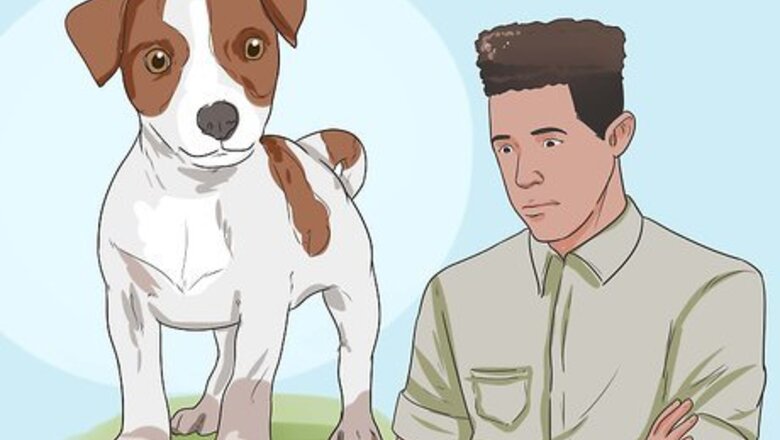
views
Training Your Jack Russell Terrier
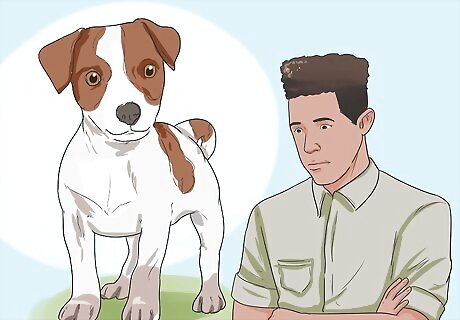
Train your Jack Russell from an early age. Training starts from day one as you teach your puppy where the toilet is and that his crate is a safe place. Young puppies learn quickly so take advantage of this to teach basic commands. More complex training can take place from 8 weeks, but keep the sessions short. Keep the session to as many minutes as the puppy is weeks old. Spread the sessions out to 2 or 3 times a day. While it's important to teach the basics, like 'sit', 'down', 'stay' and 'heel,' he should have more obedience training. If you don't train your Jack Russell from an early age, he will continue fighting to get his own way. They're strong willed dogs that will rule over their owners if not properly trained. Dogs that know commands are more easily redirected when they're overly energetic.
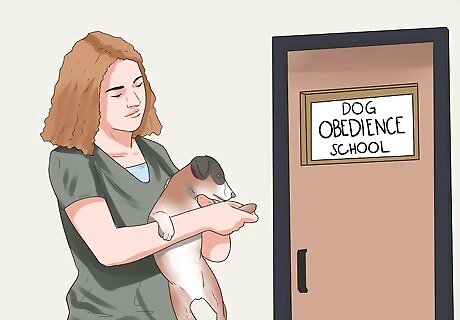
Train your dog in obedience school. Take an obedience class with your puppy to teach him canine good citizenship. You'll learn how to properly train your dog and he'll be able to socialize with other dogs and humans in a controlled setting. Training a puppy or dog is a matter of repetition, reward, praise, and patience. Never hit, scold, or otherwise negatively discipline a puppy while you are training him. Instead, keep your tone of voice positive since dogs quickly learn to pick up on displeasure in their owner’s voices.
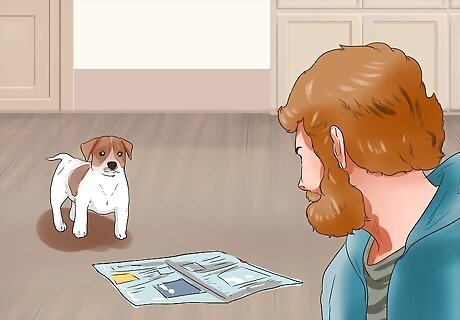
Housetrain your Jack Russell Terrier puppy. If you've gotten a Jack Russell Terrier puppy, you'll need to housetrain him. Start by choosing a small room in your house to keep your puppy in when you're not at home. Lay newspaper all over the floor for your puppy to use. Clean the paper every day, until you start noticing your puppy using a preferred spot in the room. Then you can slowly start to get rid of the paper in the areas that your puppy isn't using. Once your puppy is using only a small area of paper, you can move the paper to a place in your house designated as your puppy's place to potty.
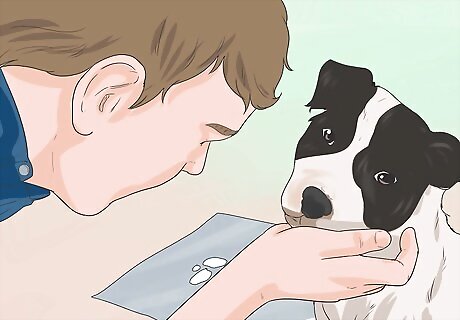
Housetrain your older Jack Russell Terrier. If your dog starts having trouble relieving himself in the appropriate place in the house or outside, retrain your dog. Take him outside every 3 hours and after he eats or naps. Remind your dog that it's time to relieve himself. If he eliminates, give him lots of praise, like "good boy." If he doesn't, bring him inside, wait 15 minutes, take him outside and try again. Take your dog to the same spot every time you go outside. This way, your dog will associate the spot with relieving himself.
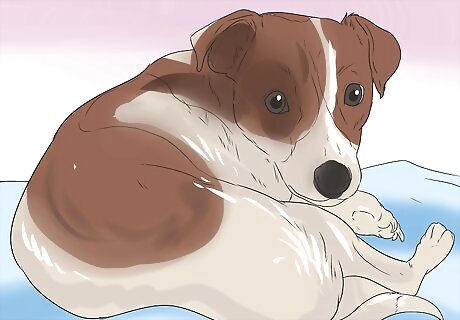
Notice signs of separation anxiety in your dog. Your dog may become anxious when you leave him throughout the day. You may notice your dog scratching, vomiting, urinating inappropriately, pacing, or being aggressive (usually in your absence). Signs of separation anxiety mean your dog depends on you and misses you, rather than being signs of misbehavior. To combat separation anxiety, don't lavish your dog with attention right before you leave the house. Instead, ignore him for 15 to 20 before you leave and for 20 minutes once you return. This will keep his excitement levels low.
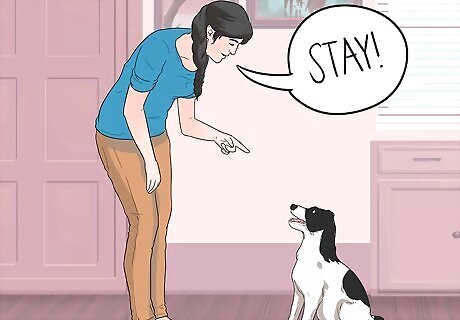
Stop your dog from chasing cats or small animals. Chasing can lead to accidents or injuries to either your Jack Russell or the animal he's chasing. To prevent this, make sure your dog sits immediately on command and stays. Or you could desensitize him to cats or other small animals. Desensitizing can also work with other situations. What it takes is patience, consistency, and time to train the puppy to react in a manner which is pleasing to you. You can do this once you have taught the dog a rock solid "Sit."
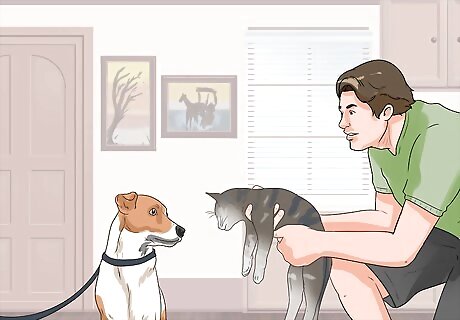
Desensitize your Jack Russell to cats or small animals. Have your Jack Russell on a sturdy leash, or even a head halter, and make him sit while another person introduces the cat either in a carrier or behind a barrier such as a baby gate. When the puppy sees the cat and reacts aggressively (lunges, barks, tries to run) tell him sit. When he obeys give him a treat. Let him watch the cat and whenever he acts in an aggressive manner, give the sit command followed by a treat when he complies. When you feel your puppy is relaxed while watching the cat, you can gradually introduce the cat to the dog (bringing carrier closer, removing the gate) but keep the dog on leash until you feel he will immediately comply with the sit command. This may take several sessions (remember to keep them short) and many days, but eventually he will learn a cat is not to be chased.
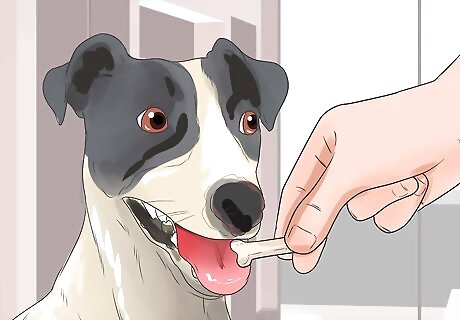
Reward your Jack Russell. Offer tiny tasty snacks, like bits of chicken or cheese, to reward your puppy when he obeys your commands. If you're just starting to teach a new command, offer a reward when you notice progress towards performing the task. Offer verbal rewards and praise, like saying, "good boy," or "yes!" as well as petting during the training session. Don’t try to train a puppy when he is hungry, tired, or too energetic. Wait until the puppy is relaxed but still responsive to you. Try to notice when your pup is being good outside of your normal training sessions. When you reward their good, calm behavior, they're more likely to be calm and well-behaved in the future.
Socializing and Interacting With Your Jack Russell Terrier
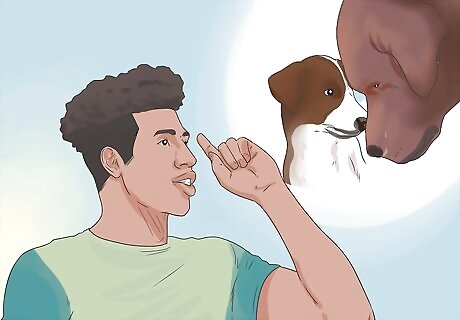
Understand why socialization helps Jack Russells. Socialization is the process of introducing a puppy to new situations so he learns to interact properly. Introducing your puppy to new situations and people teaches him that the right things (such as other friendly dogs, cats, and people) are not to be feared. Fearful dogs can become “aggressive” if they bite and bark when they cannot run away from the situation. Running away from things that should not be feared can be dangerous. Dogs can run into traffic and get hit by vehicles or run away from home and get lost.
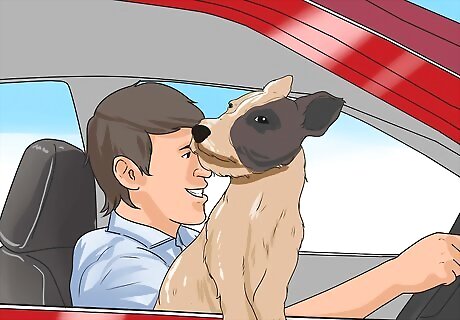
Socialize your Jack Russell. Once he's current with vaccinations, you can take him to parks, for walks along busy streets, other dog-friendly places, or enroll him in obedience school. If there are no obedience classes in your area or if you are waiting for one to start up, you can start on basic commands and socialization. You can also take him to crowded areas so he can watch new people and things. You should try exposing your dog to as many different things as possible. For example, take him for a short car ride and stop every once in a while to let him check out his surroundings. Or, invite friends and their pets over to meet your dog. Let him interact with all different types of people and animals. Don't force or rush your dog to socialize. If he's fearful around new animals, don't constantly make him interact. Instead, take it slow and move at a pace that's clearly comfortable for him.
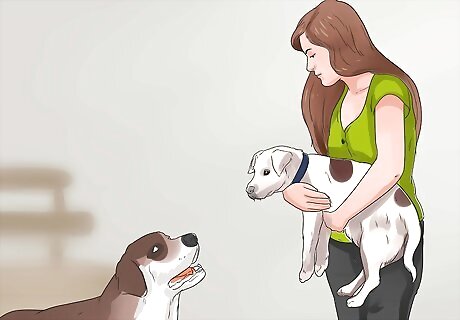
Don't pick up your dog when other dogs are around. If you do, your Jack Russell will learn to be nervous and aggressive with other dogs. Instead, try to keep him on his leash and keep him beside you when other dogs approach. If a stray or aggressive-looking dog comes up, leave the area quickly with your Jack Russell in tow. On the other hand, Jack Russells can be overly aggressive towards other dogs, even other Jack Russells.
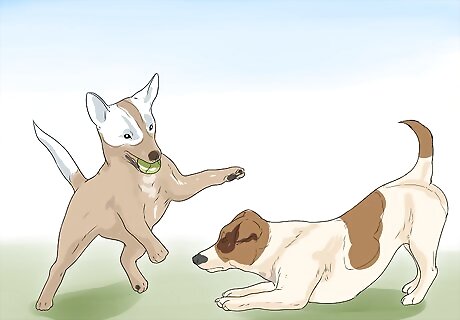
Monitor your Jack Russell Terrier around other dogs. Since Jack Russell Terriers are hunting dogs, it's in their nature to be aggressive. You should never leave your dog unattended with another dog, even another Jack Russell Terrier. For this reason, you shouldn't have a Jack Russell Terrier around small children, small animals or pets, or cats. To curb some of your dog's aggression, keep him well exercised and active. Bored Jack Russell Terriers are more likely to be aggressive or destructive.
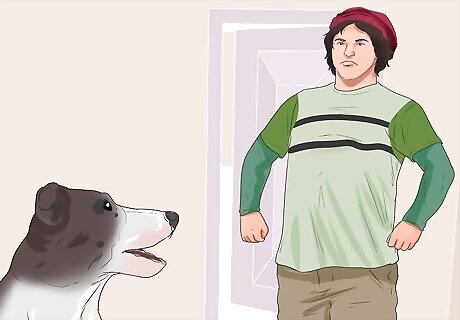
Teach your dog his place in the family. Since your Jack Russell may think he's the top dog, let him know that you are the master. For example, after he's learned the sit command, make your Jack Russell sit for his food before you let him eat it. Be firm and consistent with him. Don't just let him do whatever he wants.
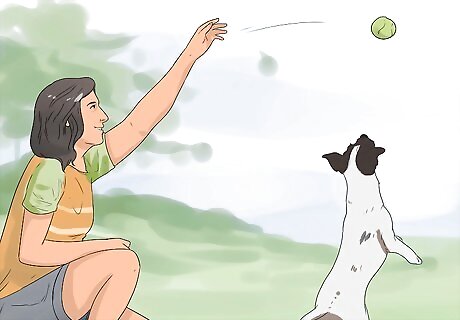
Exercise your Jack Russell at least twice a day. You can take him for a long walk or play active games. Jack Russells are very smart and will keep you hopping unless they can find an outlet for all their pent-up energy. Playing active games such as fetch will help burn off their excessive energy. Terriers love this game. Jack Russells love when you chase them for the toy. Don't make this a habit, or your dog will learn not to come to you when you call him. Instead, teach him the "drop it" command. This way, you're still in charge of the game. Bring your pup to a safe, enclosed area where they can run around and burn off their energy. Try to give your Jack Russell two 45-minute exercise sessions per day.
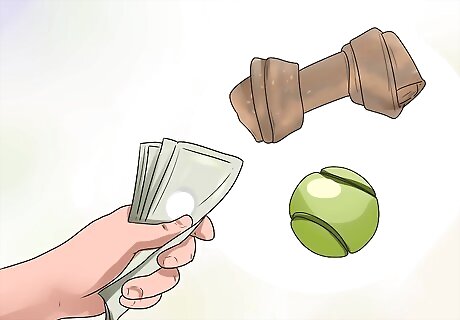
Buy really durable chew toys. These can help burn your Jack Russell's energy. Kongs are great toys because they're almost impossible to tear apart. You can pack them full of peanut butter and treats to keep you Jack Russell busy and working for his snacks. Generally, stuffed toys aren't great for terriers, even though they love them. Your Jack Russell will probably tear it apart and try to eat it piece by piece leaving your home covered in stuffing.
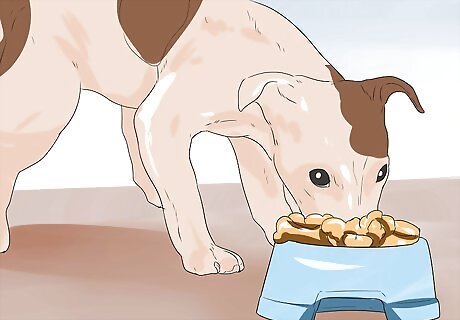
Feed your Jack Russell a nutritious diet. Choose a high-quality dog food that isn't filled with grains or preservatives. Instead, look for a dog food that lists meat, such as lamb or chicken, as a top ingredient. Since dog food products vary, follow the specific feeding instructions on the package. You'll probably also need to adjust the amount food you give your Jack Russell Terrier based on his age, activity level, and size. As a general guideline, a 12 inch (30.5 cm) Jack Russell Terrier should weigh around 12 to 13 pounds.












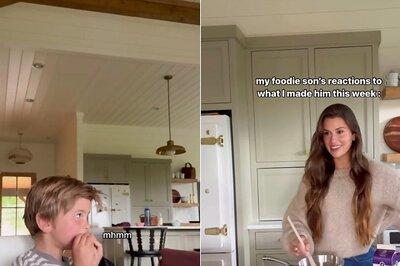




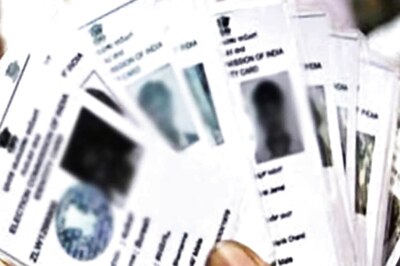


Comments
0 comment